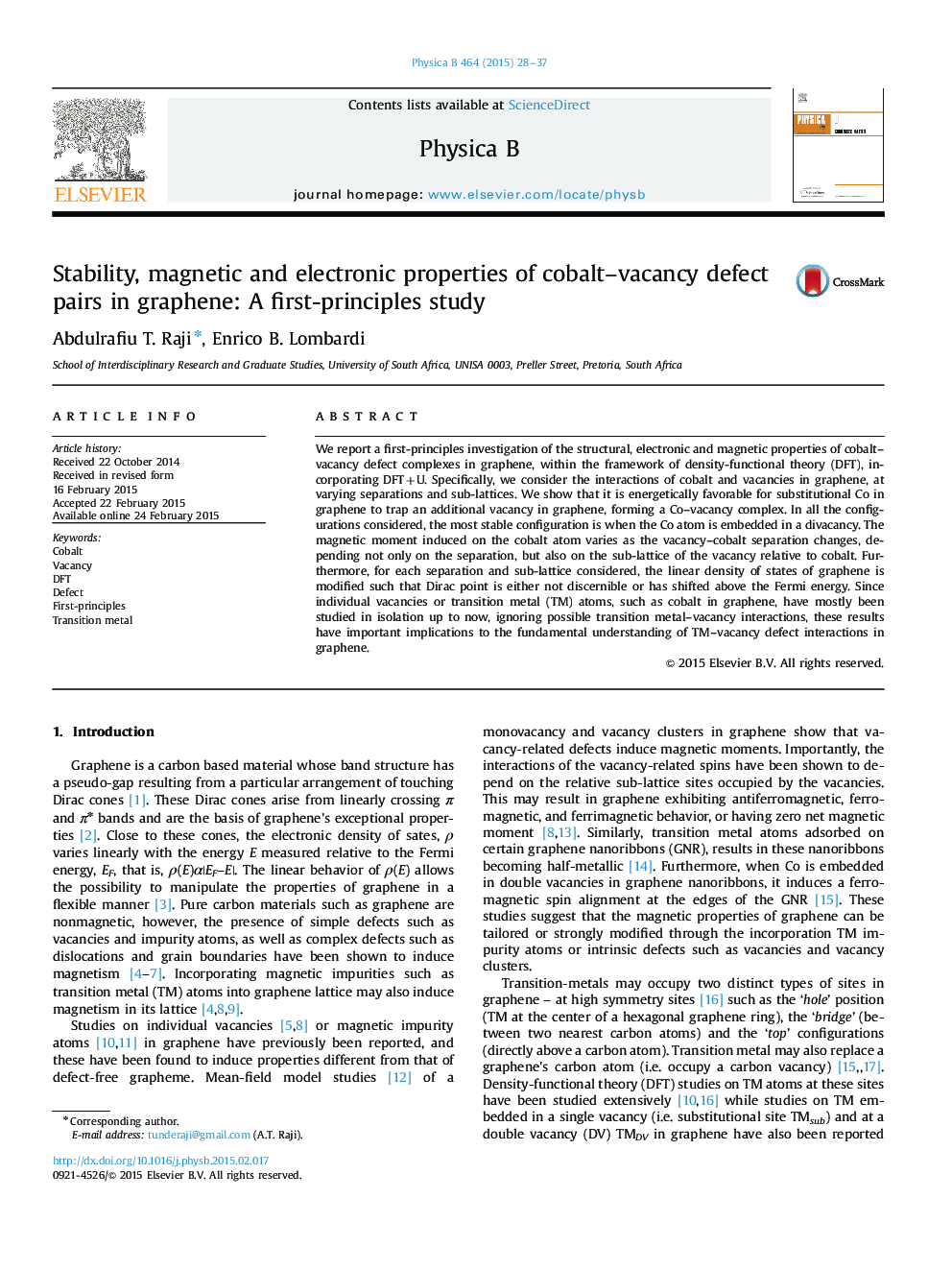| Article ID | Journal | Published Year | Pages | File Type |
|---|---|---|---|---|
| 1808903 | Physica B: Condensed Matter | 2015 | 10 Pages |
We report a first-principles investigation of the structural, electronic and magnetic properties of cobalt–vacancy defect complexes in graphene, within the framework of density-functional theory (DFT), incorporating DFT+U. Specifically, we consider the interactions of cobalt and vacancies in graphene, at varying separations and sub-lattices. We show that it is energetically favorable for substitutional Co in graphene to trap an additional vacancy in graphene, forming a Co–vacancy complex. In all the configurations considered, the most stable configuration is when the Co atom is embedded in a divacancy. The magnetic moment induced on the cobalt atom varies as the vacancy–cobalt separation changes, depending not only on the separation, but also on the sub-lattice of the vacancy relative to cobalt. Furthermore, for each separation and sub-lattice considered, the linear density of states of graphene is modified such that Dirac point is either not discernible or has shifted above the Fermi energy. Since individual vacancies or transition metal (TM) atoms, such as cobalt in graphene, have mostly been studied in isolation up to now, ignoring possible transition metal–vacancy interactions, these results have important implications to the fundamental understanding of TM–vacancy defect interactions in graphene.
